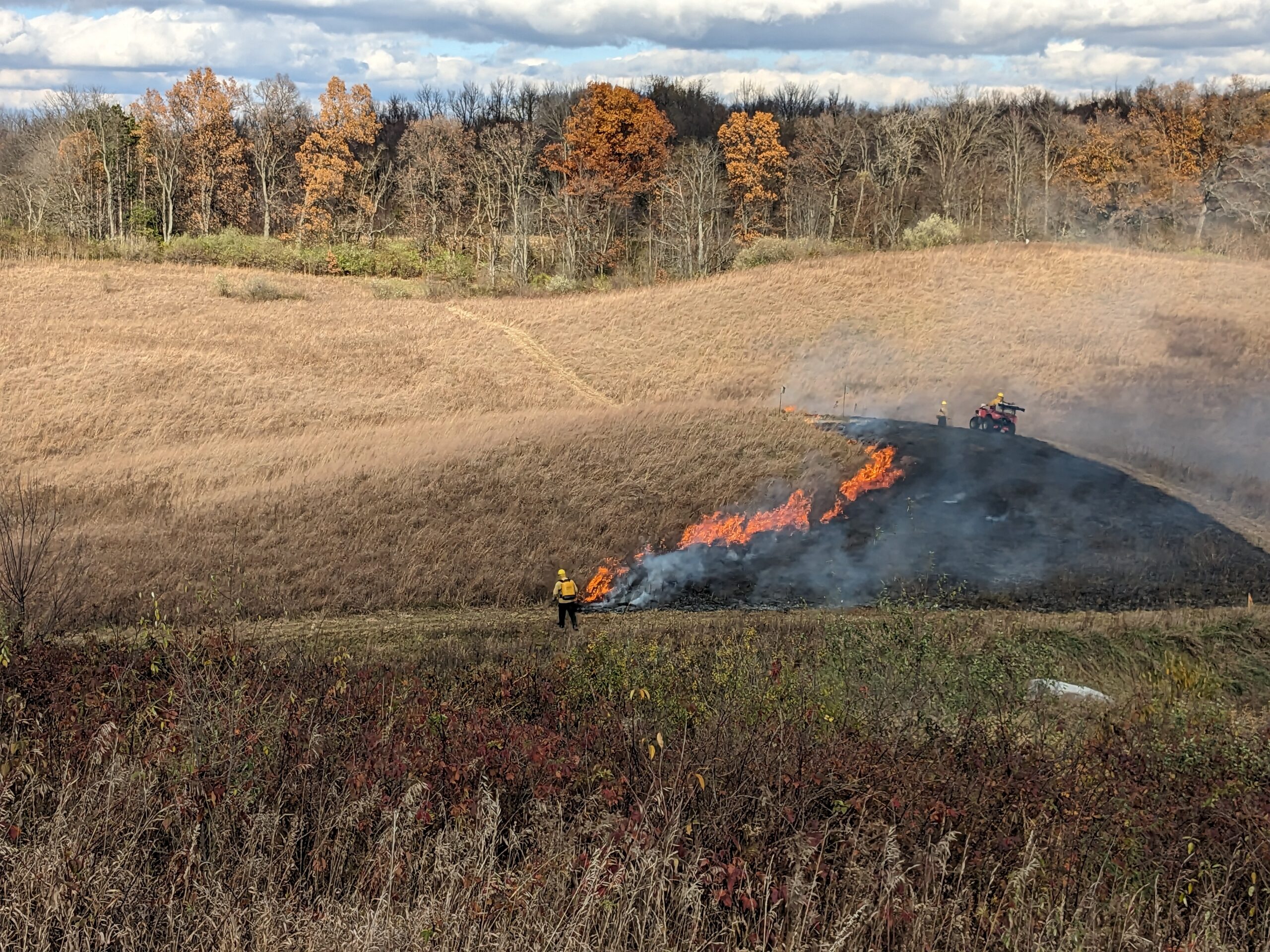Conservation Manager Chad Machinski, M.S., joined the Michigan Audubon team in March and has made great progress in reviving the stewardship of MA’s sanctuaries and engaging with our dedicated volunteers ever since. To help you stay connected with the work being done, he will be presenting regular online updates about activities going on at them: birds seen or heard, conservation work, improvements, interesting plants, and more.
PHYLLIS HAEHNLE MEMORIAL SANCTUARY
In late October, the bugling calls of Sandhill Cranes reverberated through the sky as they left Mud Lake to seek foraging sites for the day. Volunteer Steve Jerant and I watched them fly overhead as we met in the Phyllis Haehnle Memorial Sanctuary parking lot before starting on the grounds. We took a stroll through the burn break that was mowed in preparation for the 5-acre prescribed burn that would successfully take place on November 2. This burn fulfills our requirements for the year on our multi-year EQIP Grant administered by the USDA Natural Resource Conservation Service. We then took an exploratory hike through one of the oak-hickory forests on site, an area I had not yet ventured into and got to meet vernal pools, elms, and groves of swamp white oak. The prairie called us back as we had seed collecting to do. We were joined by about eight volunteers and sauntered into the prairies to collect seeds from plants such as little bluestem, showy tick-trefoil, showy goldenrod, round-headed bush-clover, and more. These seeds will be cleaned of chafe and pappus this winter and will be sowed back into areas of Haehnle that have burned or need floristic diversity.
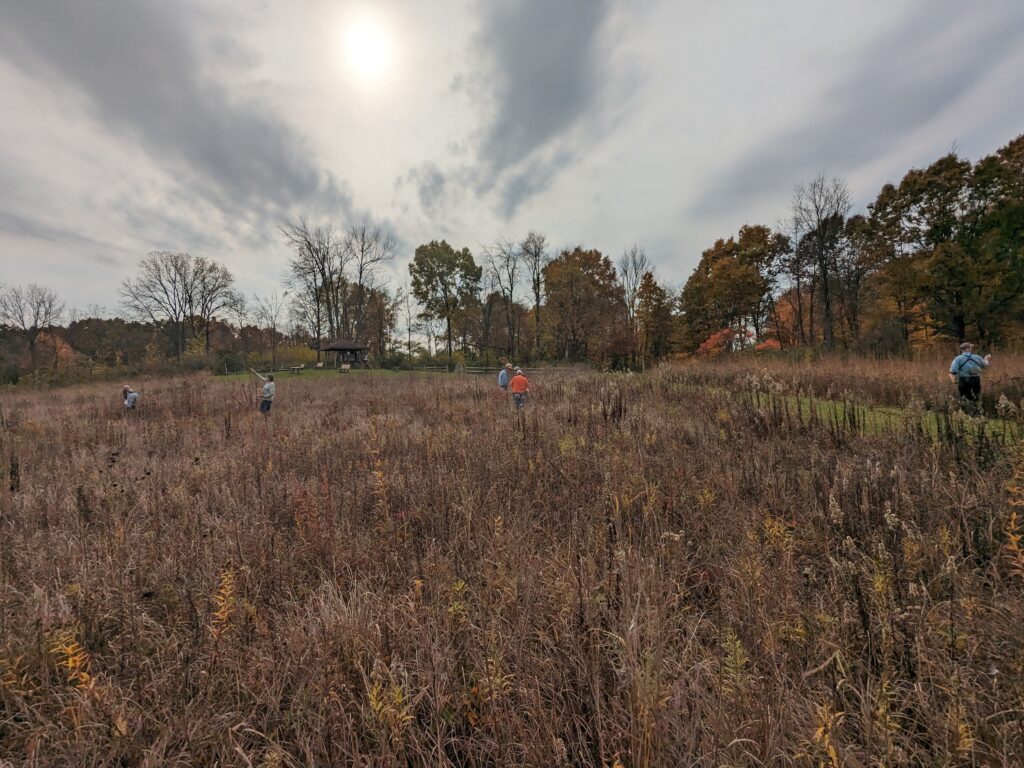
Volunteers collect seeds in the prairie at Phyllis Haehnle Memorial Sanctuary. Photo by Chad Machinski
BERNARD W. BAKER SANCTUARY
The beginning of November saw a few visits to Bernard W. Baker Sanctuary, the first to meet Intro to Ecology students from Olivet University. I discussed with them the history of Baker Sanctuary, invasive species, management strategies, and natural communities on the site. It’s great to get introductory students out of the classroom and out to our sites to get a feel for the type of work out there and expose them to the possibilities in ecology. My follow-up visits consisted of work in the 2.5-acre unit that would get burned on November 3. I thought it necessary to remove excessive woody material in the unit that I knew would not get knocked back by the fire, like the 15-foot tall walnuts growing right on the edge of the unit and the trail. While it can seem sacrilegious to remove native trees, it’s important to remember the site’s goals. If you wish to create a prairie with little to no woody plants growing, then a tree that may reach 100 feet in height, with a canopy that may encourage other undesirable plants, is not something you want to let grow.
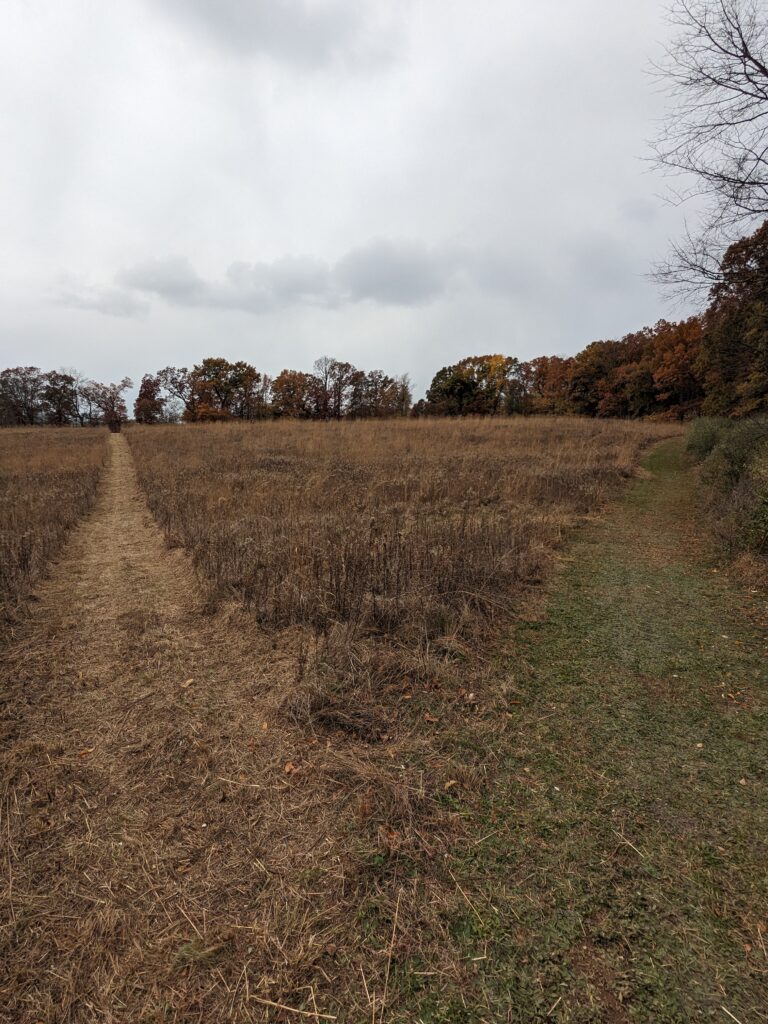
A burn break (left) that was mowed near the trails (right) prior to the burn at Bernard W. Baker Sanctuary. Photo by Chad Machinski
OTIS FARM BIRD SANCTUARY
In addition to my trips to Baker, I also did a few trips to the Otis Farm Bird Sanctuary. First, installing a new kiosk near the parking lot with volunteer Del Bachert, followed up with more autumn olive treatments, of course. But the second trip to Otis was undoubtedly the highlight as volunteers Del and Gayle Bachert and I observed a 5-acre prescribed burn on November 11. Once lit, the fire took an hour and a half to consume the unit. Walking through after the burn, one could see small ant mounds of the Allegheny mound ant, a native ant that is an important component of prairies and open woodlands.
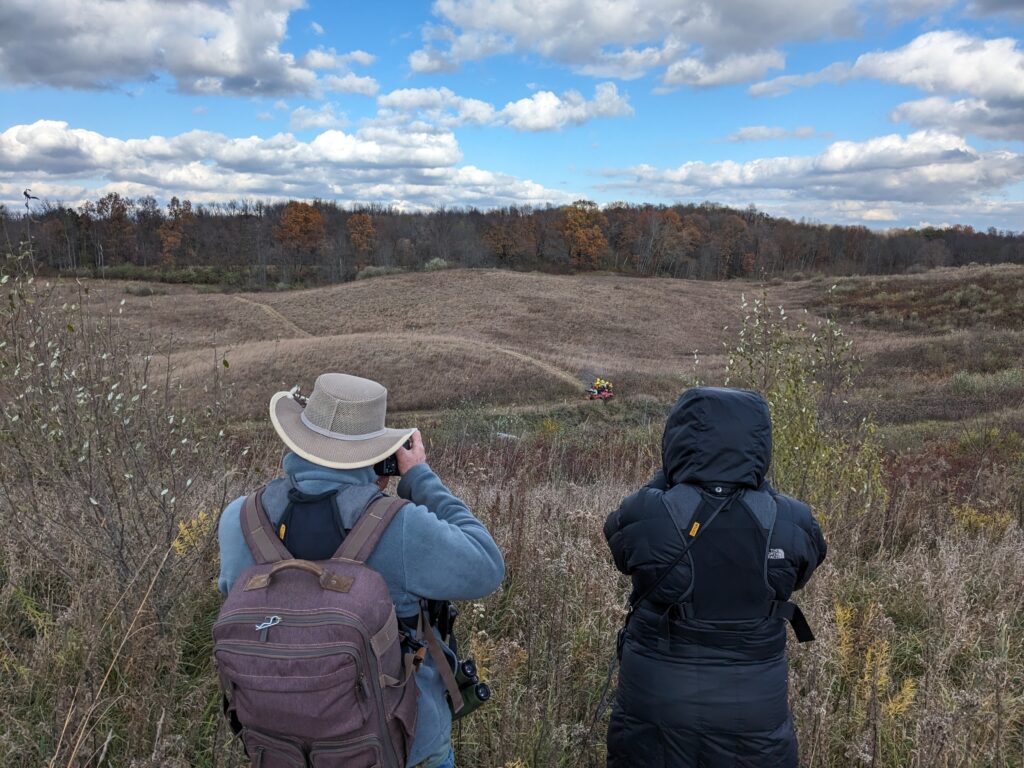
Volunteers Del and Gayle Bachert observing the start of a prescribed burn by Blue Heron Ministries at Otis Farm Bird Sanctuary. Photo by Chad Machinski
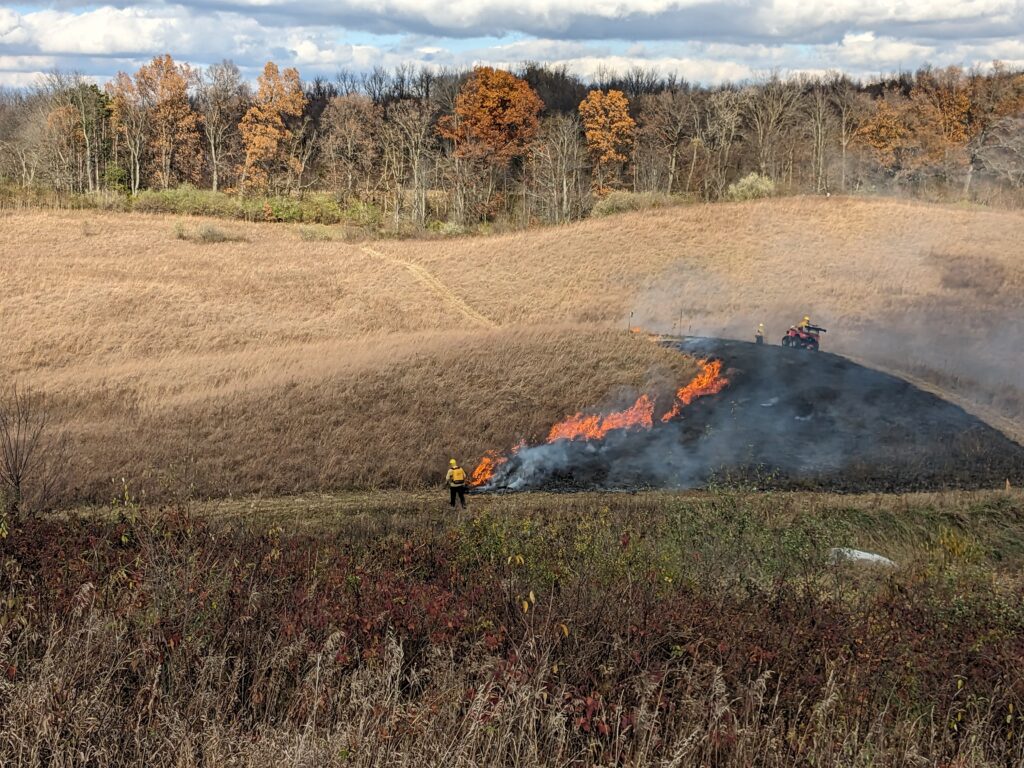
Prescribed burn in western section of unit 2.06 performed by Blue Heron Ministries. Photo by Chad Machinski
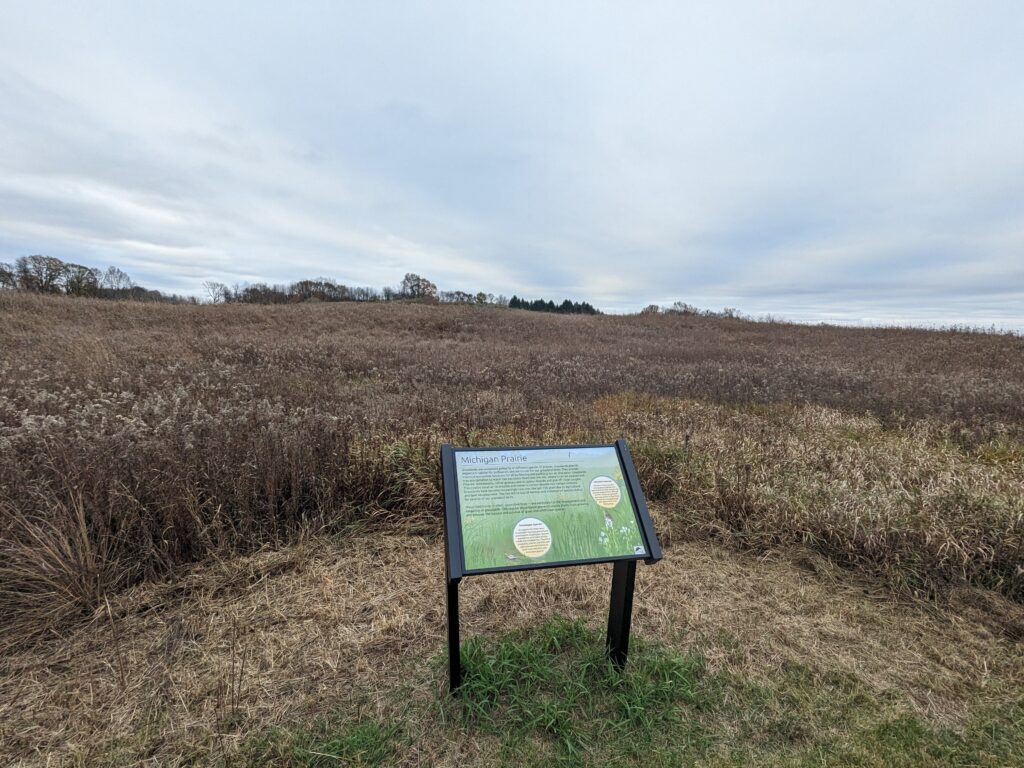
Before the prescribed burn at Otis Farm Bird Sanctuary. Photo by Chad Machinski
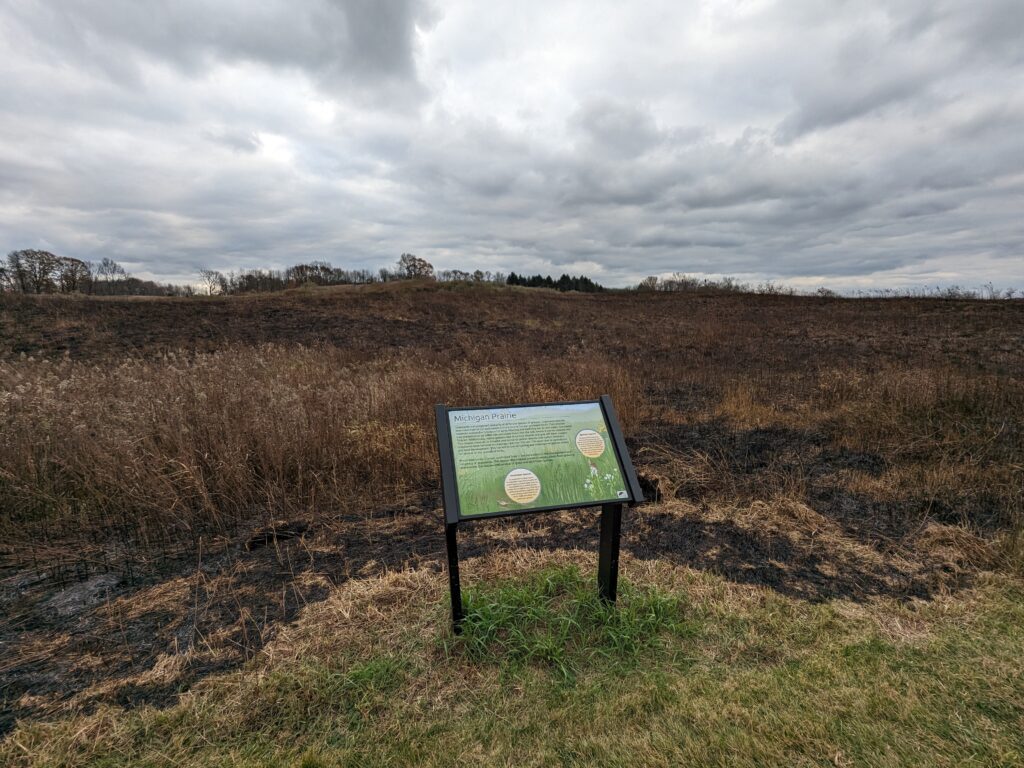
After the prescribed burn at Otis Farm Bird Sanctuary. Photo by Chad Machinski
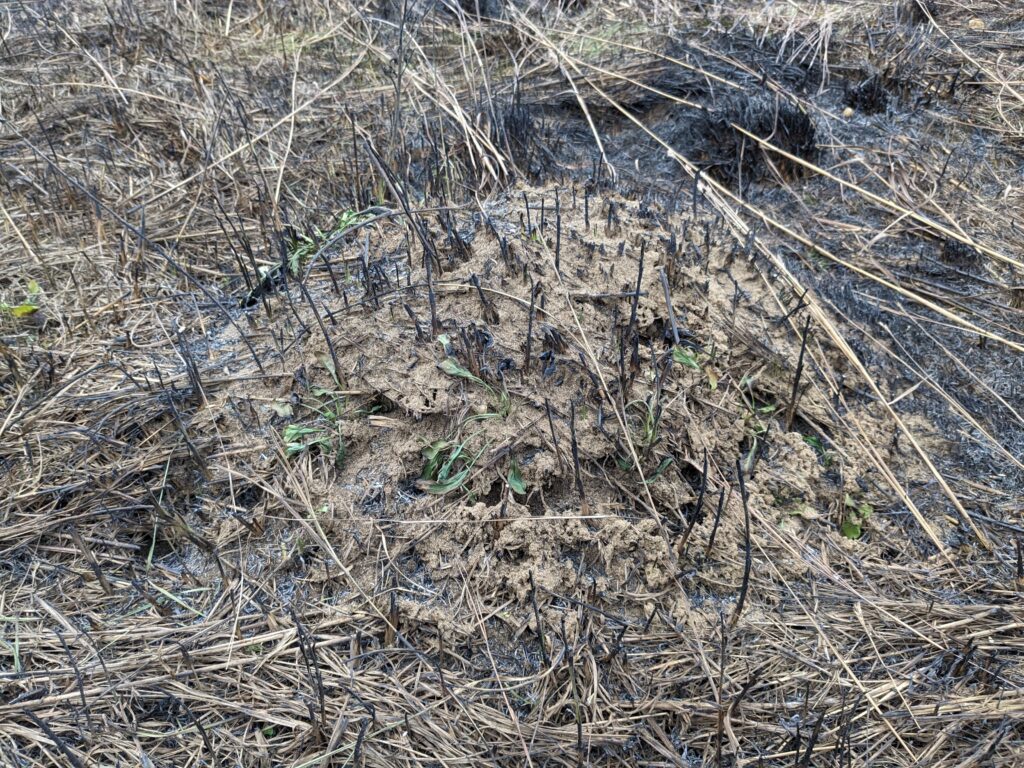
Evidence of the Allegheny mound ant, a native ant that is an important component of prairies and open woodlands, was found at Otis Farm Bird Sanctuary following a prescribed burn. Photo by Chad Machinski
With the burn season over for us at Michigan Audubon, it’s a great feeling to look back and see that we completed four prescribed fires on our sanctuaries this year: two at Haehnle, one at Baker, and one at Otis. While the fires are destructive by nature, they are critical disturbances necessary to maintain prairies and savanna ecosystems which support a variety of flora and fauna that can’t be found in forested settings, and by June of next year, it will be difficult to tell that a fire ran through these prairies. I look forward to continuing with annual burns at these sanctuaries and burning sanctuaries that haven’t seen fire in decades.
To learn more about Michigan Audubon sanctuaries, visit michiganaudubon.org/conservation/bird-sanctuaries. If you want to volunteer at a Michigan Audubon sanctuary, please complete the Sanctuary Volunteer Interest Form.

Chad Machinski, MS
Conservation Manager
While Chad’s first love is botany, he doesn’t deny the intertwining nature of birds, plants, insects, and all other organisms we share the world with. His passion for the natural world began in his undergraduate time at the University of Michigan, taking several different forms along the way. His graduate studies at the University of Michigan allowed him to more closely examine the natural communities of Michigan and further understand the complex nature of ecosystems. His work as a Nichols Arboretum Caretaker while in school further enabled him to be directly involved in conservation work as he led workdays removing invasive plant species, performed trail maintenance, and guided tours. Chad can usually be found out in a park in a few ways: binoculars glued to his face, hunched over looking at plants, or flipping logs looking for snakes and salamanders.

